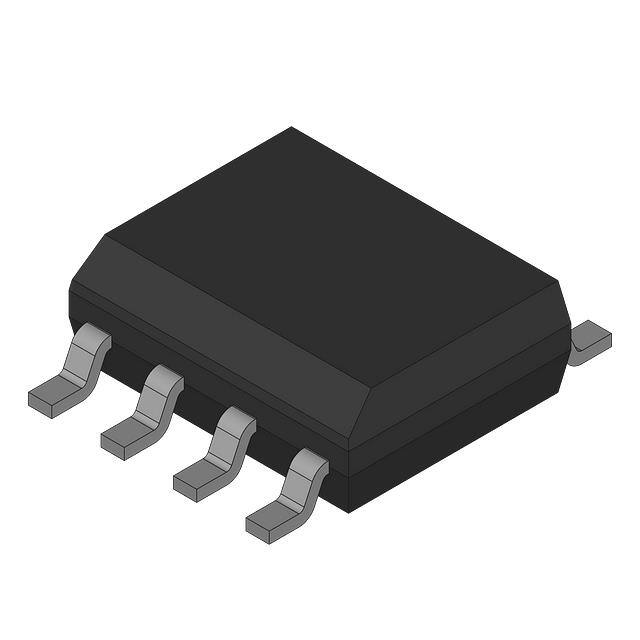How to choose a suitable crystal oscillator
What is a crystal oscillator ?
A crystal oscillator is an electronic component used to generate precise frequency signals. Its core is to use the piezoelectric effect of quartz crystals to induce mechanical vibration of the crystals through an external voltage, thereby generating a stable oscillation signal. Crystal oscillators are widely used in electronic devices to provide clock signals, frequency references or time bases for circuits.
How does a crystal oscillator work ?
Basic principles of crystal oscillators:
Piezoelectric effect: Quartz crystal is a material with piezoelectric effect. When voltage is applied to it, it will undergo mechanical deformation due to the action of the electric field; conversely, when it vibrates mechanically, it will generate electric charges.
Resonance characteristics: Quartz crystals have mechanical resonance phenomena at certain specific frequencies, which correspond to the inherent vibration modes of the crystals (fundamental frequencies or harmonic frequencies).
Oscillator circuit: By connecting a quartz crystal to an amplifier or oscillator circuit, a stable oscillation signal is formed using positive feedback.
Main classifications of crystal oscillators
1. By package form
DIP (dual in-line package)
SMD (surface mount crystal oscillator)
2. By function
Passive crystal oscillator: requires an external oscillation circuit to work and only provides mechanical oscillation.
Active crystal oscillator: built-in oscillation circuit, directly output stable signal.
3. According to frequency accuracy
Ordinary crystal oscillator
Temperature compensated crystal oscillator (TCXO)
Voltage controlled crystal oscillator (VCXO)
Oven controlled crystal oscillator (OCXO)
How to choose a suitable crystal oscillator?
You can choose a crystal oscillator according to the common application scenarios of the crystal oscillator. Of course, you also need to choose the most suitable crystal oscillator based on the actual needs of the project.
Crystal oscillator common applications
| application | Recommended crystal type | Remark |
|---|---|---|
| Consumer electronics | Passive crystal oscillator | Usually use 32.768kHz or 16MHz passive crystal oscillator. |
| High-precision communication equipment | OCXO/TCXO | High precision and stability, such as GPS, wireless communication base stations. |
| Microcontroller applications | Passive crystal oscillator, Active crystal oscillator | Choose a frequency that matches the MCU, such as 8MHz, 16MHz. |
| Industrial control | Industrial grade crystal oscillator | High stability in a wide temperature range, such as -40°C to 85°C. |
| IoT low-power devices | 32.768kHz crystal oscillator | Provide a low-power clock signal for RTC (real-time clock). |
Selecting a suitable crystal oscillator requires comprehensive consideration of the following aspects based on application requirements
1. Frequency requirements
Target frequency: The crystal oscillator needs to meet the frequency requirements of the circuit or system. For example, a microcontroller or communication module usually has a specific clock frequency requirement (such as 16MHz or 32.768kHz).
Frequency range: Choose a single-frequency crystal oscillator or a wide-band crystal oscillator according to system requirements.
Frequency division or frequency multiplication: If the circuit design allows, you can also use a crystal signal that has been divided or multiplied.
2. Frequency accuracy and stability
Initial frequency accuracy: The frequency deviation of the crystal oscillator, usually in ppm (parts per million). For example, ±10 ppm means that there may be an error of ±10Hz per megahertz.
Temperature stability: Does the device need to maintain frequency stability in a wide temperature range (such as -40°C to 85°C)? If so, you may need to choose a TCXO or OCXO.
Aging rate: The long-term frequency drift of the crystal oscillator needs to be controlled within an acceptable range, especially in precision applications.
3. Electrical characteristics
Operating voltage: Make sure the operating voltage of the crystal oscillator is compatible with the circuit (such as 1.8V, 3.3V or 5V).
Load capacitance: The data sheet of the crystal oscillator will indicate the load capacitance value, usually 10pF to 30pF. Choosing the wrong load capacitance may result in inaccurate frequency or failure to oscillate.
Drive capability: Is the drive current of the circuit sufficient to excite the crystal oscillator?
4. Package form
Choose the appropriate package according to the board space and process requirements:
DIP (dual in-line package): suitable for traditional through-hole circuit boards and easy to replace.
SMD (surface mount): used for modern miniaturized, high-density PCB designs.
Metal package: usually has better shielding effect and stability.
5. Environmental adaptability
Operating temperature range: select crystal oscillators according to the application environment, such as industrial grade (-40°C to 85°C) or consumer grade (0°C to 70°C).
Vibration and shock resistance: If the device will be exposed to high vibration or shock environment, select crystal oscillators with enhanced vibration resistance.
6. Power consumption
In low-power devices (such as wearable devices or IoT terminals), choose low-power crystal oscillators (such as 32.768kHz crystal oscillators with low current).
7. Cost and supplier
Budget: High-precision crystal oscillators (such as OCXO) are expensive, but the performance is excellent, which needs to be weighed according to application requirements.
Supply chain assurance: Choose reliable suppliers and brands (such as Epson, NDK, Abracon, TXC) to ensure long-term supply and technical support.


